Abstract
A set of electrocardiographic criteria for the diagnosis of coronary artery disease was evaluated in two different groups of patients examined by computer aided 12 lead exercise electrocardiographic stress testing and coronary arteriography. One group consisted of patients with severe angina pectoris and the other of patients who had suffered a myocardial infarction three years before the study. Angiographically determined categories of patients could be identified with satisfactory precision by the electrocardiographic criteria under test in the patients with angina pectoris but not in those with infarction. A new method of classifying patients on the basis of data from coronary arteriography improved the correlation with ST segment analysis compared with conventional classification.
Full text
PDF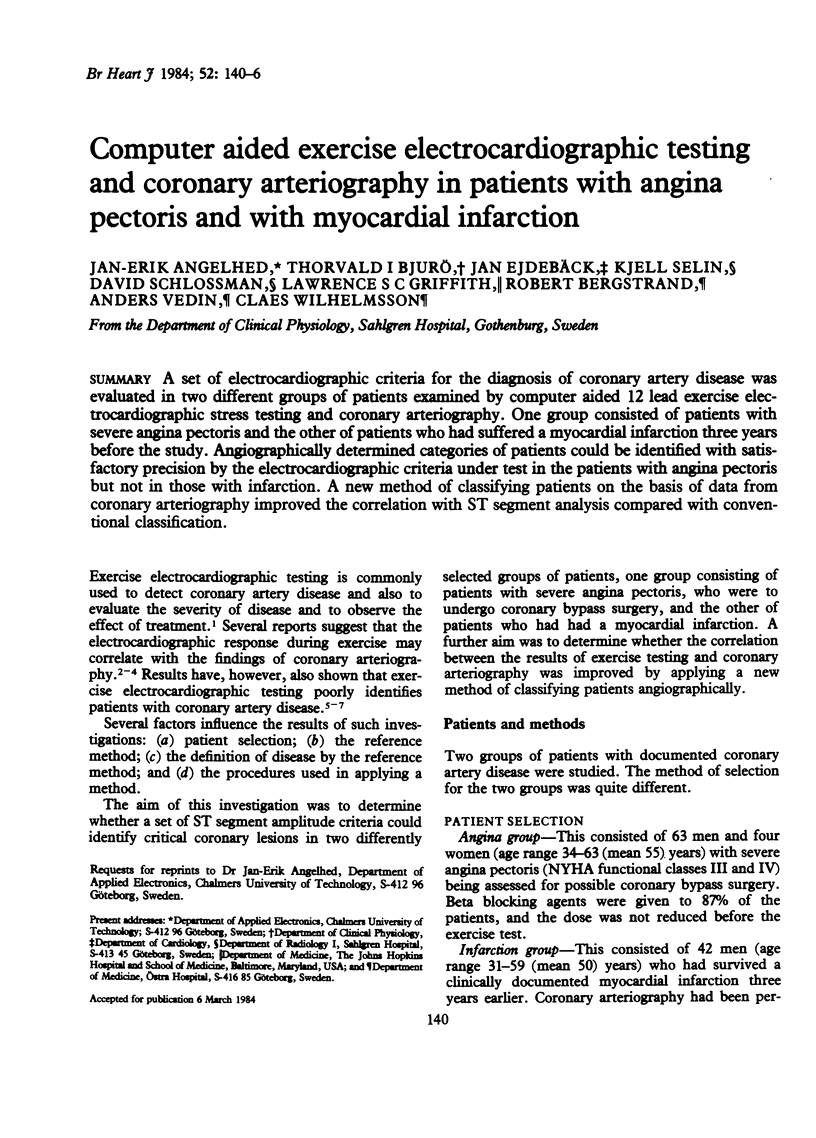
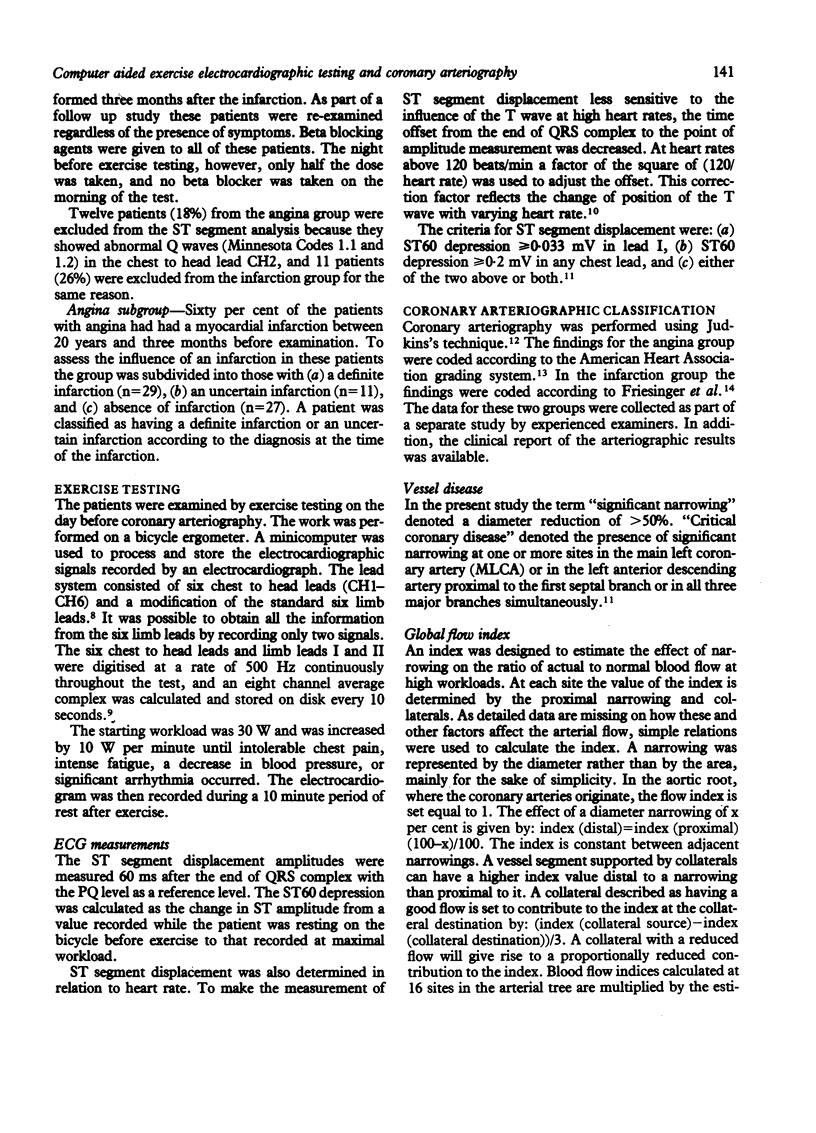
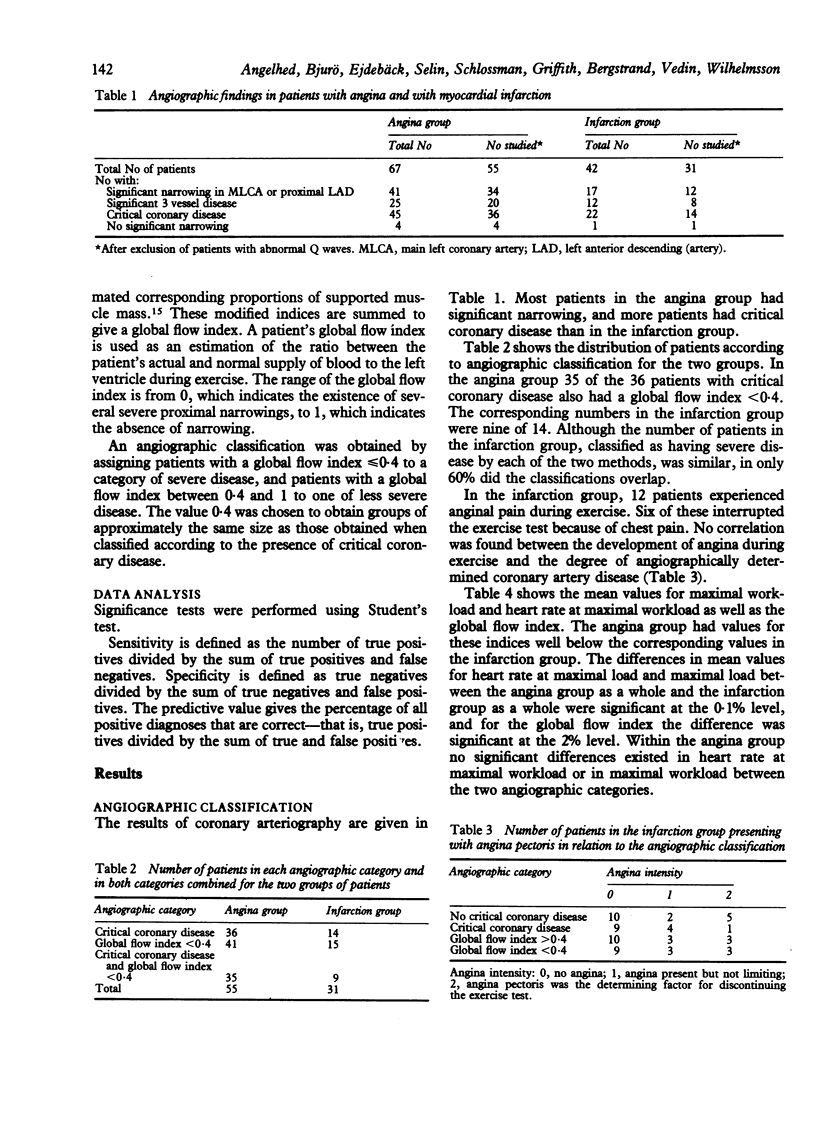
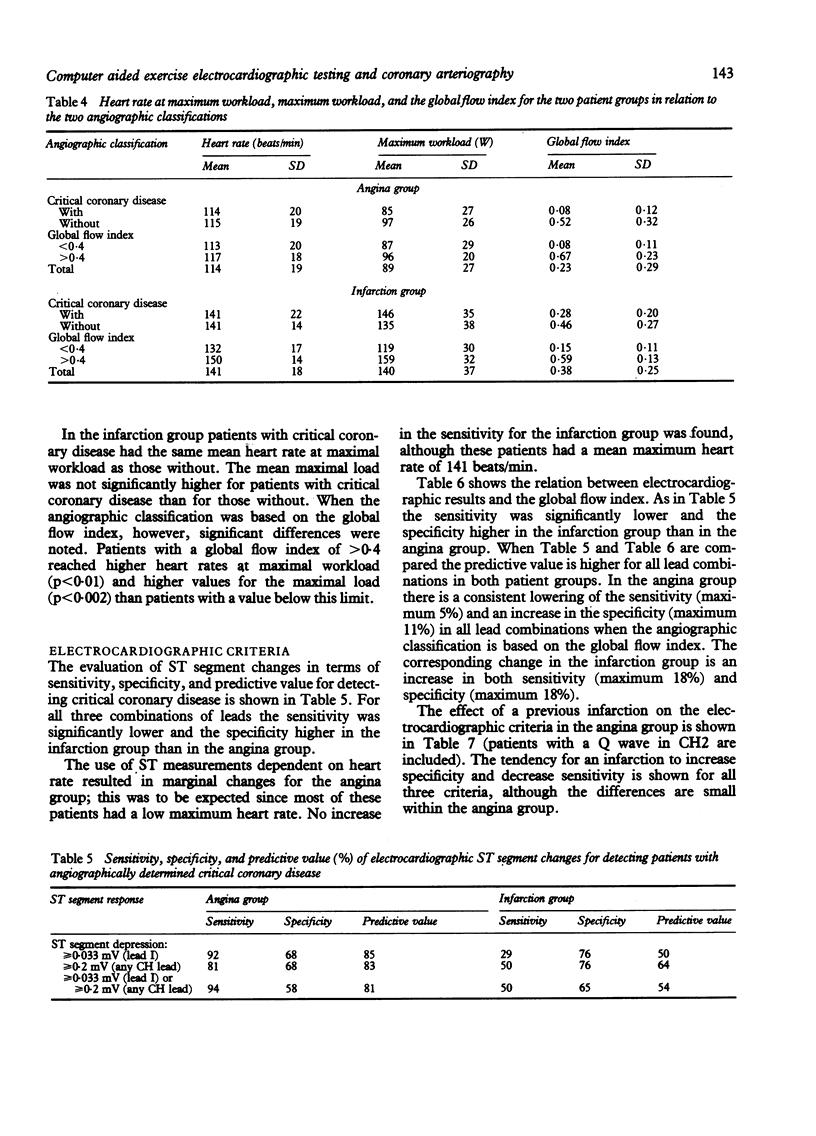
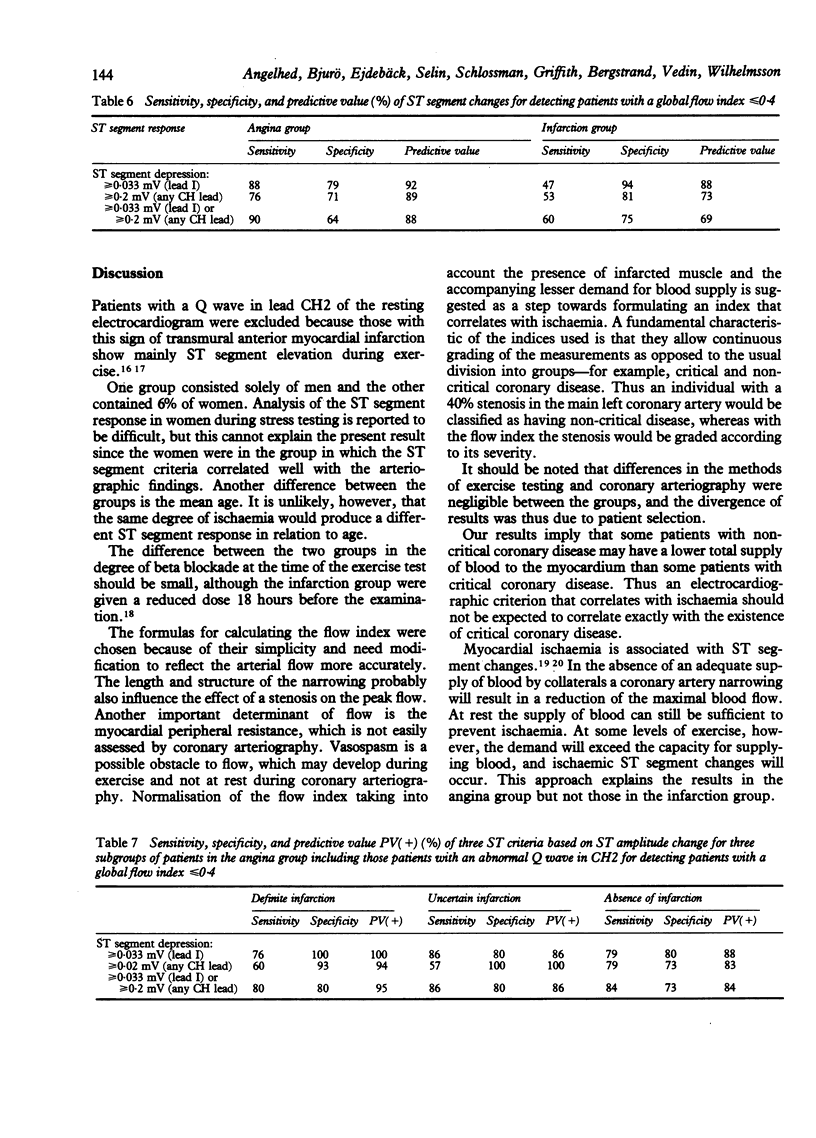
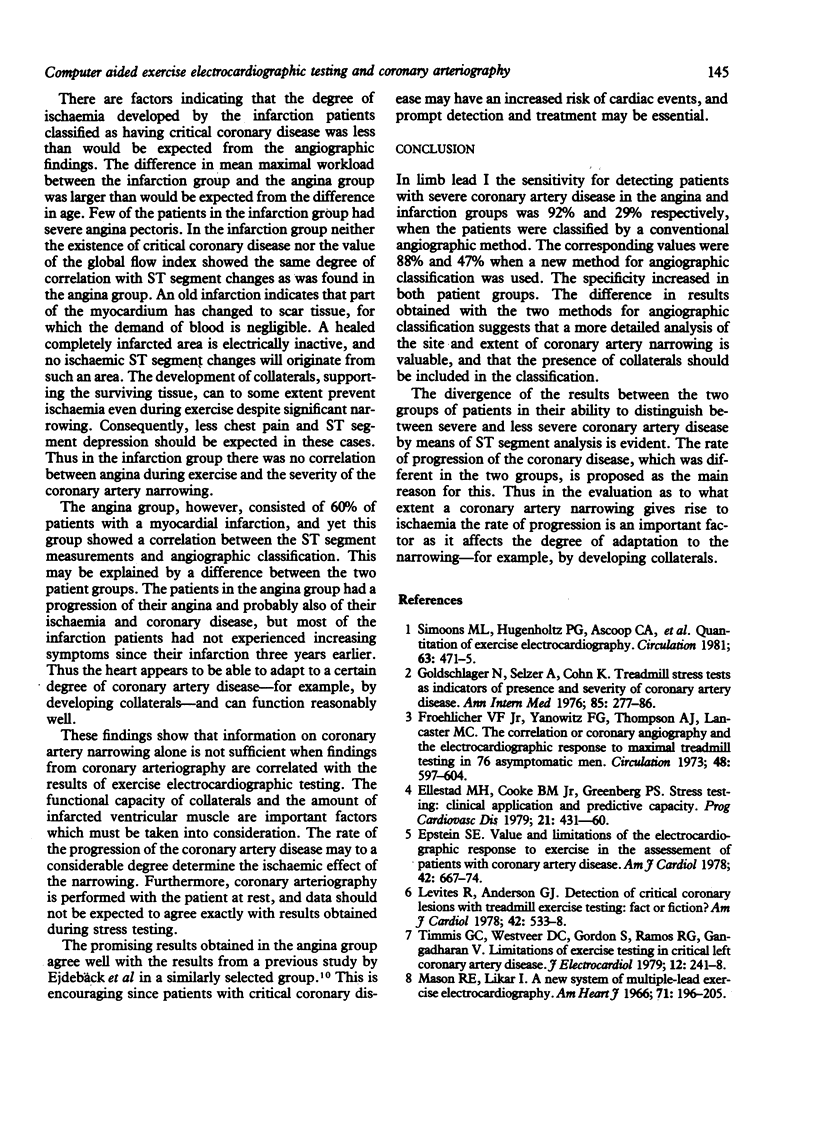
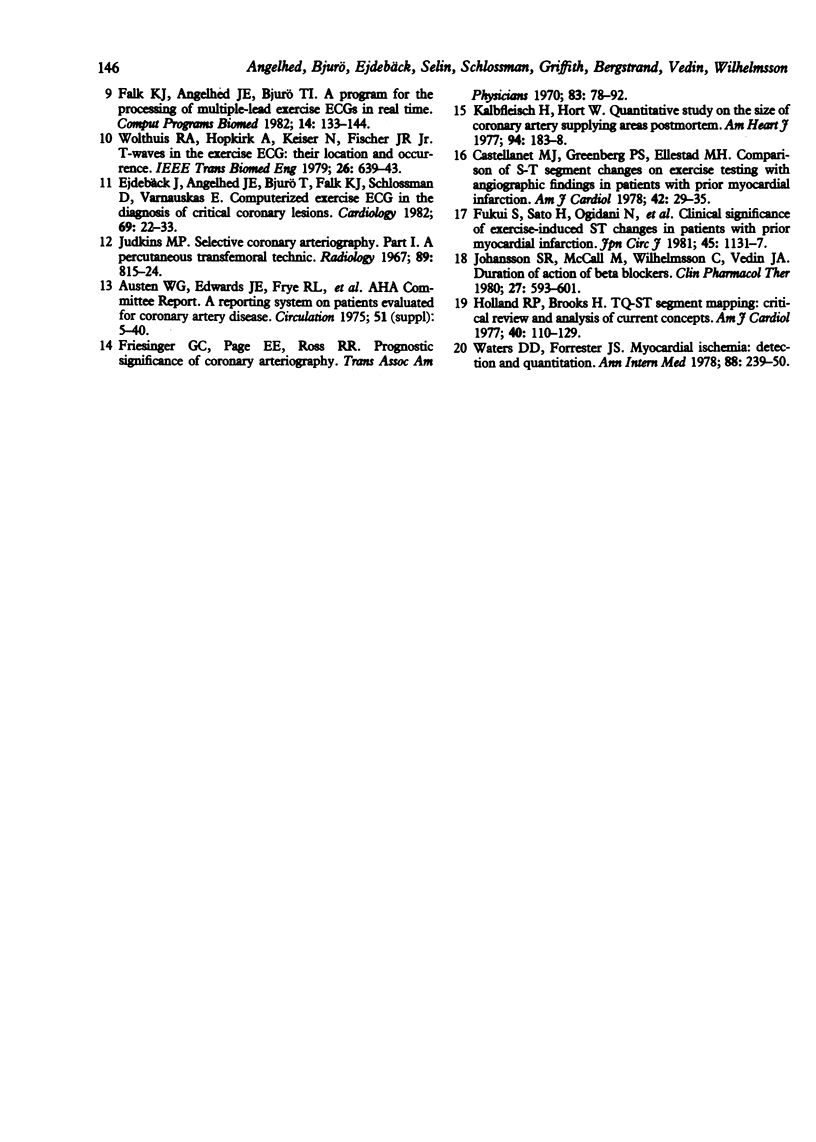
Selected References
These references are in PubMed. This may not be the complete list of references from this article.
- Austen W. G., Edwards J. E., Frye R. L., Gensini G. G., Gott V. L., Griffith L. S., McGoon D. C., Murphy M. L., Roe B. B. A reporting system on patients evaluated for coronary artery disease. Report of the Ad Hoc Committee for Grading of Coronary Artery Disease, Council on Cardiovascular Surgery, American Heart Association. Circulation. 1975 Apr;51(4 Suppl):5–40. doi: 10.1161/01.cir.51.4.5. [DOI] [PubMed] [Google Scholar]
- Castellanet M. J., Greenberg P. S., Ellestad M. H. Comparison of S-T segment changes on exercise testing with angiographic findings in patients with prior myocardial infarction. Am J Cardiol. 1978 Jul;42(1):29–35. doi: 10.1016/0002-9149(78)90980-3. [DOI] [PubMed] [Google Scholar]
- Ejdebäck J., Angelhed J. E., Bjurö T., Falk K. J., Schlossman D., Varnauskas E. Computerized exercise ECG in the diagnosis of critical coronary lesions. Cardiology. 1982;69(1):22–33. doi: 10.1159/000173479. [DOI] [PubMed] [Google Scholar]
- Ellestad M. H., Cooke B. M., Jr, Greenberg P. S. Stress testing: clinical application and predictive capacity. Prog Cardiovasc Dis. 1979 May-Jun;21(6):431–460. doi: 10.1016/0033-0620(79)90025-2. [DOI] [PubMed] [Google Scholar]
- Epstein S. E. Value and limitations of the electrocardiographic response to exercise in the assessment of patients with coronary artery disease. Controversies in cardiology--II. Am J Cardiol. 1978 Oct;42(4):667–674. doi: 10.1016/0002-9149(78)90639-2. [DOI] [PubMed] [Google Scholar]
- Falk K. J., Angelhed J. E., Bjurö T. I. A program for processing of multiple-lead exercise ECGs in real time. Comput Programs Biomed. 1982 Apr;14(2):133–144. doi: 10.1016/0010-468x(82)90016-2. [DOI] [PubMed] [Google Scholar]
- Friesinger G. C., Page E. E., Ross R. S. Prognostic significance of coronary arteriography. Trans Assoc Am Physicians. 1970;83:78–92. [PubMed] [Google Scholar]
- Froelicher V. F., Jr, Yanowitz F. G., Thompson A. J., Lancaster M. C. The correlation of coronary angiography and the electrocardiographic response to maximal treadmill testing in 76 asymptomatic men. Circulation. 1973 Sep;48(3):597–604. doi: 10.1161/01.cir.48.3.597. [DOI] [PubMed] [Google Scholar]
- Fukui S., Sato H., Ogidani N., Miyake S., Sato K., Minamino T., Inoue M., Abe H. Clinical significance of exercise-induced ST changes in patients with prior myocardial infarction: comparison of electrocardiographic and angiographic findings. Jpn Circ J. 1981 Oct;45(10):1131–1137. doi: 10.1253/jcj.45.1131. [DOI] [PubMed] [Google Scholar]
- Goldschlager N., Selzer A., Cohn K. Treadmill stress tests as indicators of presence and severity of coronary artery disease. Ann Intern Med. 1976 Sep;85(3):277–286. doi: 10.7326/0003-4819-85-3-277. [DOI] [PubMed] [Google Scholar]
- Henry M. J., Grimes H. A., Lane J. W. Intervertebral disk calcification in childhood. Radiology. 1967 Jul;89(1):81–84. doi: 10.1148/89.1.81. [DOI] [PubMed] [Google Scholar]
- Holland R. P., Brooks H. TQ-ST segment mapping: critical review and analysis of current concepts. Am J Cardiol. 1977 Jul;40(1):110–129. doi: 10.1016/0002-9149(77)90109-6. [DOI] [PubMed] [Google Scholar]
- Johansson S. R., McCall M., Wilhelmsson C., Vedin J. A. Duration of action of beta blockers. Clin Pharmacol Ther. 1980 May;27(5):593–601. doi: 10.1038/clpt.1980.84. [DOI] [PubMed] [Google Scholar]
- Kalbfleisch H., Hort W. Quantitative study on the size of coronary artery supplying areas postmortem. Am Heart J. 1977 Aug;94(2):183–188. doi: 10.1016/s0002-8703(77)80278-0. [DOI] [PubMed] [Google Scholar]
- Levites R., Anderson G. J. Detection of critical coronary lesions with treadmill exercise testing: fact or fiction? Am J Cardiol. 1978 Oct;42(4):533–538. doi: 10.1016/0002-9149(78)90619-7. [DOI] [PubMed] [Google Scholar]
- Mason R. E., Likar I. A new system of multiple-lead exercise electrocardiography. Am Heart J. 1966 Feb;71(2):196–205. doi: 10.1016/0002-8703(66)90182-7. [DOI] [PubMed] [Google Scholar]
- Simoons M. L., Hugenholtz P. G., Ascoop C. A., Distelbrink C. A., de Land P. A., Vinke R. V. Quantitation of exercise electrocardiography. Circulation. 1981 Mar;63(3):471–475. doi: 10.1161/01.cir.63.3.471. [DOI] [PubMed] [Google Scholar]
- Timmis G. C., Westveer D. C., Gordon S., Ramos R. G., Gangadharan V. Limitations of exercise testing in critical left coronary artery disease. J Electrocardiol. 1979 Jul;12(3):241–248. doi: 10.1016/s0022-0736(79)80057-6. [DOI] [PubMed] [Google Scholar]
- Waters D. D., Forrester J. S. Myocardial ischemia: detection and quantitation. Ann Intern Med. 1978 Feb;88(2):239–250. doi: 10.7326/0003-4819-88-2-239. [DOI] [PubMed] [Google Scholar]
- Wolthuis R. A., Hopkirk A., Keiser N., Fischer J. R., Jr T-waves in the exercise ECG: their location and occurrence. IEEE Trans Biomed Eng. 1979 Nov;26(11):639–643. doi: 10.1109/tbme.1979.326547. [DOI] [PubMed] [Google Scholar]


